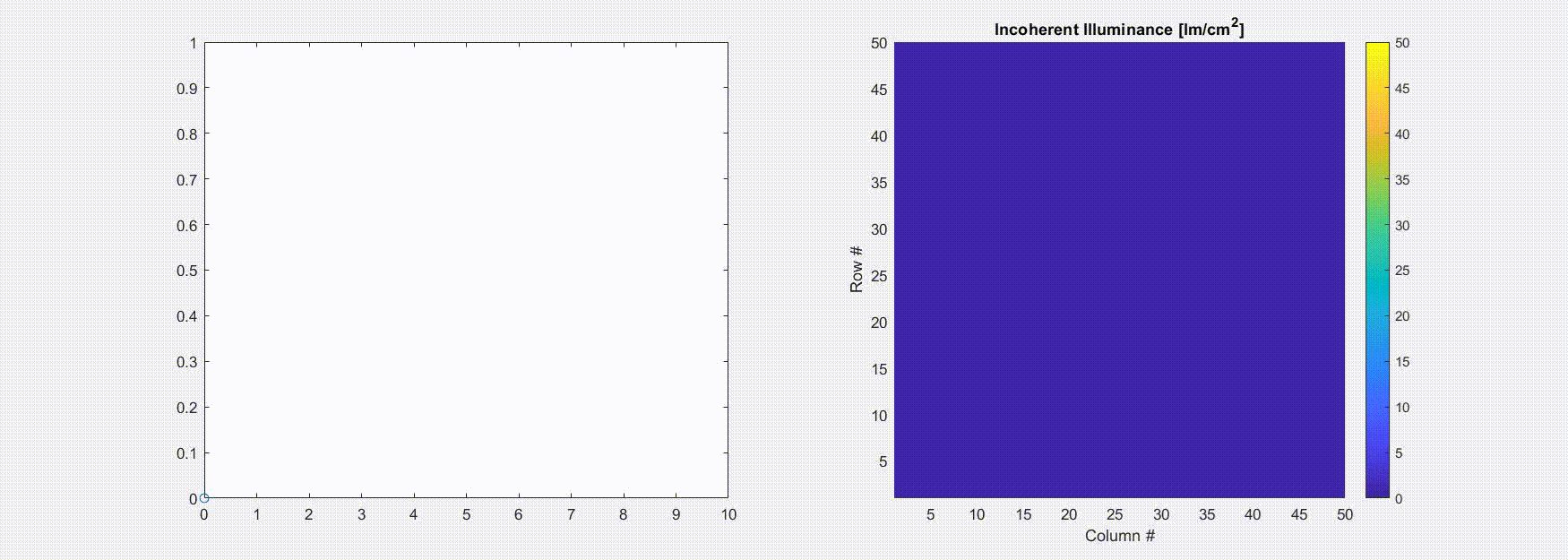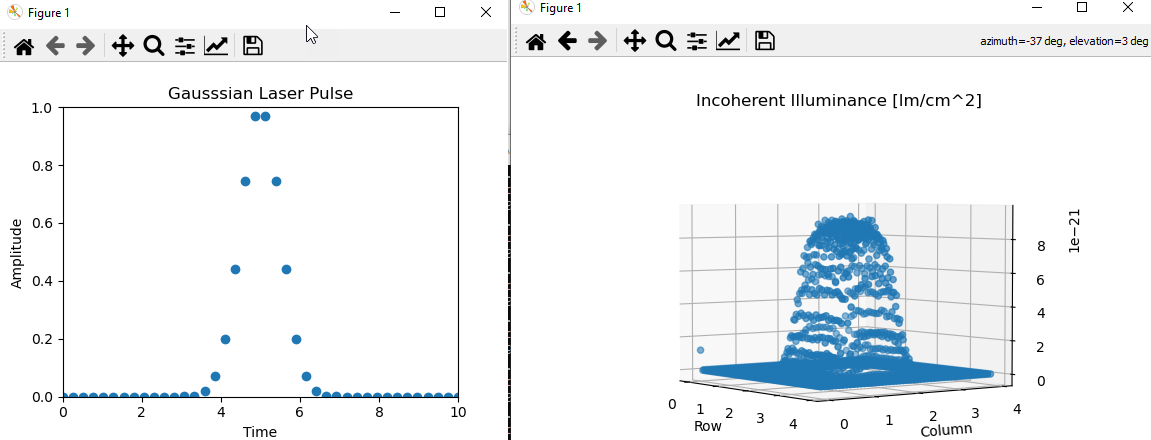
This Matlab code shows the possibility of simulating a pulsed laser by using ZOS-API. In this example, amplitude of the pulsed laser varied over time, and the irradiance in the detector being recorded. The final results being exported as a video.
Language: Matlab
Click here to download | |||
|---|---|---|---|
| Date | Version | OpticStudio Version | Comment |
| 2021/07/23 | 1.0 | - | Creation |
| 2021/08/13 | Added a Python script | ||





